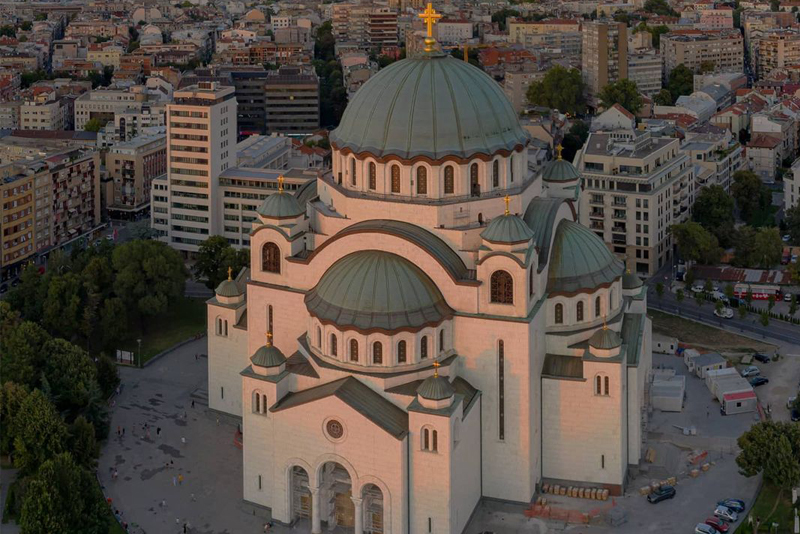
Over the centuries, the Church founded by Christ has expanded the area of its presence and increased the number of its communities. The small Churches scattered throughout the Ecumene and mainly located in large cities have gradually evolved into a complex network of dioceses, with metropolises as their central points. The need was becoming urgent for a hierarchical structure that would, among other things, preserve certain autonomy of the existing communities in their internal affairs. This is how the exarchates and autonomies appeared, which we have spoken about earlier. Autocephaly is the next and final level of church hierarchy. Let’s discuss it in this article.
Part of the Catholic Church
Autocephaly (Greek Αὐτοκεφαλία – “self-heading”) is the status of a local Church, giving it the right to full territorial and administrative independence from other local Churches. Head of an Autocephalous Church can bear the title of Patriarch, Archbishop or Metropolitan. Being independent in internal affairs from other churches, an autocephalous church remains part of the Catholic Church and must maintain full fraternal communion in the Sacraments with other churches of the same kind. Otherwise it would be risking falling into schism and losing unity with the Ecumenical Church, to which the Lord alone promised the invincibility against the gates of hell (see Matthew 16:18). According to Orthodox doctrine, every local church, whether autocephalous or not, is homologous with the entire Holy church, with all the fullness of the Holy Spirit abiding in it. Its nature will change however if it does not maintain Eucharistic communion with other communities (Protopresbyter Nikolai Afanasyev).
The History
As is often the case, the word “autocephaly” has historically been used in both secular and ecclesiastical terms. At first, the term “autocephaly” was applied to bishops who were not under the jurisdiction of their metropolitans, while being directly subordinate to the archbishop of the superior see (Exposition Praesessionum Patriarcharum et Metropolitarum, PG 86: 798-92). Such a signification of autocephaly, existing in ancient times, has a similar meaning with the phenomenon of Stauropegia i.e. monasteries and parishes that, being on the territory of a certain diocese, are excepted from the authority of the ruling bishop, while being directly subordinate to the head of the local Church. Later, the term “autocephaly” acquired the meaning that we are used to attaching to it today.
Historically, the right to grant autocephalous status to any Church belonged to the Ecumenical Council. For instance, the Third Ecumenical Council in Ephesus granted independence to the Church of Cyprus, deciding that the Cypriots will henceforth ordain their primate without consent of the Antioch see (Canon 8). Conversely, the Council of Chalcedon, magnifying the See of Constantinople, abolished the actual independence of the ecclesiastical dioceses of Asia, Pontus and Thrace, and subordinated them to the bishop of New Rome (canon 28). Cases are also known when a mother church granted autocephaly to its parts (for example, the Church of Antioch elevating the Bishop of Mtskheta to the rank of Catholicos in 466, thereby, in fact, granting independence to the Church of Georgia.
Rights Enjoyed by an Autocephaly
An Autocephalous Church has a list of rights, denied to church entities of a lower organizational level. The most important of them is the right to independently ordain and/or elect their head. Canonically, at least three bishops are needed to consecrate a bishop; consequently autocephaly must include at least 4 episcopal sees (Archpriest Vladislav Tsypin, Church Law). Autocephaly has the right to independently issue its own laws (statutes and regulations) and independently determine its structure, for example, decide how much authority will belong to the Primate as chairman of the Synod. Another important advantage is the right to confer the holy Chrism, which, according to tradition, is performed by the primate himself.
Autocephalous churches can independently compose and introduce new rites and chants to use during worship, provided, of course, that Orthodox dogma is preserved in these texts. Also, autocephalous churches have the right to canonize their saints, ecclesiastical autonomies, whose decisions must be approved by the kyriarchal church. Finally, Autocephaly convenes its own Local Councils and communicates with other churches directly, and not through the mother church.
Terms of Provision
Granting a church the right to autocephaly is usually conditioned by its location outside the country where the kyriarchal church is located, as well as its geographic remoteness and ethnic originality. Even more important, however, is the desire to acquire autocephaly shared by clergy and laity, as well as the “maturity” of a particular local church. Currently, the question of ownership of the right to grant autocephaly is debatable and does not have a conciliar consensus. According to the Russian Church, each autocephaly has the right to grant independence to any of its constituent parts, while the Ecumenical Patriarchate insists that this right is reserved for “the first among equals”. A possible compromise could be the granting of autocephaly by the Ecumenical See at the request of a local church and subject to the approval of all other sister churches.




